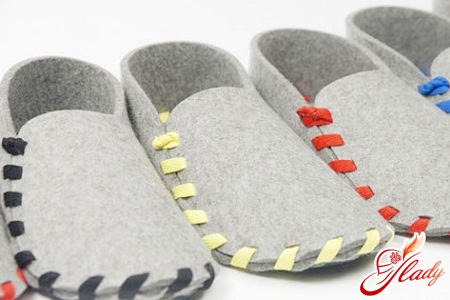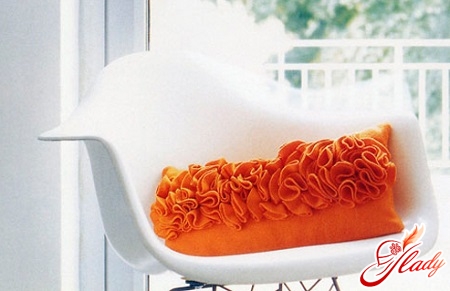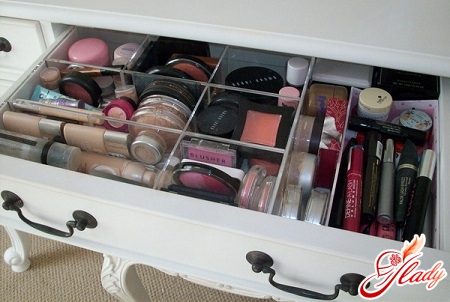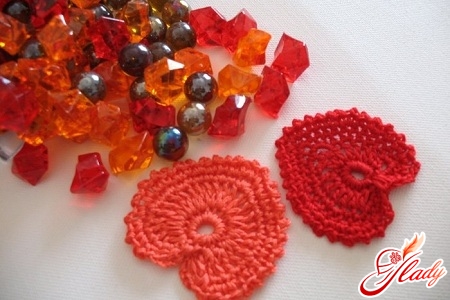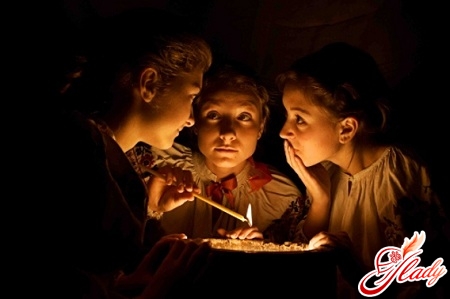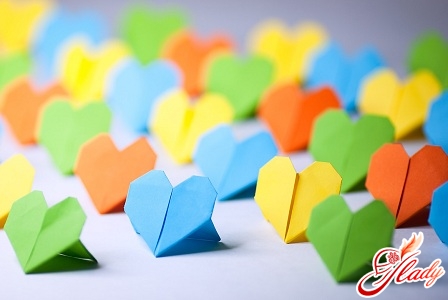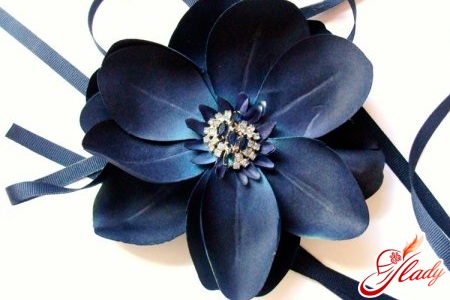 Natural flowers are wonderful.A delicate aroma envelops the entire room. Beautiful buds decorate the interior. But natural flowers have a significant disadvantage. They quickly fade. Which cannot be said about fabric flowers. Their beauty is almost eternal. Why almost? And try giving a bud to a small child, then you will understand. By the way, about hands. Did you know that the most beautiful bouquets are made of fabric, created by you personally? And it is not worth saying that you hold a needle in your hands once a year, and that each attempt at needlework ends with spoiled material. Creating flowers from fabric with your own hands is not at all difficult. How exactly? We will teach you now.
Natural flowers are wonderful.A delicate aroma envelops the entire room. Beautiful buds decorate the interior. But natural flowers have a significant disadvantage. They quickly fade. Which cannot be said about fabric flowers. Their beauty is almost eternal. Why almost? And try giving a bud to a small child, then you will understand. By the way, about hands. Did you know that the most beautiful bouquets are made of fabric, created by you personally? And it is not worth saying that you hold a needle in your hands once a year, and that each attempt at needlework ends with spoiled material. Creating flowers from fabric with your own hands is not at all difficult. How exactly? We will teach you now.
Artificial flowers: the history of origin and development
But before we start learning, let's tell youA little about the history of artificial flowers. The first daffodils, roses and daisies made of fabric appeared in the 3rd century BC. Seductive Egyptian women decorated their clothes with artificial flowers. Greek women also decided to keep up with fashion and, having mastered needlework, created buds from fabric with all their might. But the most beautiful were considered to be artificial flowers, which were used to decorate churches during holidays. Nuns created flower collages from the material. Either they put their soul into their handicrafts, or the aura of the monastery acted this way, but the flowers really turned out to be truly divine. Then (in the 15th century) the fashion for artificial roses and daffodils reached Italy. From there to France - the empire of world fashion. It was the French women who enthusiastically began to wear clothes strewn with buds made of starched material. Therefore, each tailor had to have a specially trained girl at the workshop, who did nothing but sew artificial flowers. By the 19th century, this handicraft had become so popular that it spread to all the remaining countries, including Russia. They especially loved to decorate women's hats with fabric flowers. Entire flower beds nestled on the heads of young beauties. It must be admitted that fashionistas not only happily bought new products with artificial flowers, but also competed with each other in whose outfit was more luxurious. Naturally, fabric buds decorated not only hats, but also dresses, since tailors had to balance the balance between the headdress and the main outfit. Artificial roses made from starched fabric were especially popular. It must be admitted that today more and more often you can see artificial flowers decorating the hats of royal persons (usually members of the royal family wear hats for races), clothes and even shoes. Moreover, not only a princess, but also a completely ordinary girl can decorate a costume with a red fabric rose. The only question is where to wear this floral perfection. Therefore, before thinking over the sketch of the future outfit, think about its appropriateness.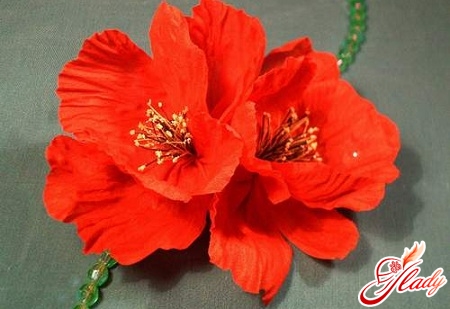
Cloth for artificial flowers
If you are serious about learning how to create fabric bouquets, you should know that not every piece of fabric is suitable for this type of handicraft.
- This needlework provides for the use of exclusively monochrome fabric.
- Do not discard the trimmings that remainyou after sewing. Sometimes the finest patches make the most beautiful artificial flowers, since it is easier to work with scraps than with a large cut of fabric.
- For realistic bouquets in full size, suitable fabrics such as chintz, satin, coarse calico, satin, silk, cambric, crepe de Chine.
- If you plan to make a boutonniere for clothes, then you will need such types of fabrics as silk, velvet, velvet, panbarhat, brocade, satin, silver or gold brocade, leather and husky.
- Artificial flowers look good, with the creation of which several types of fabrics were used. So experiment!
What other secrets does the flower hold?needlework? There are actually many of them. And it is simply impossible to master all the subtleties in one reading of the article. But if you feel a burning desire to create a beautiful bouquet and feel the fabric at the same time, then you will succeed!
We prepare a pattern
In the creation of artificial flowers everything is the same aswhen sewing a skirt or dress. The process begins with an idea and ends with a pattern. Why does it end? Because if you cut out the details incorrectly, you won't get any flower, and your good undertaking will die on the vine. To prevent this from happening, you need to remember a few secrets:
Preparing the Parts
Do not rush to sew the cut out pieces together. Перед началом работы их нужно выстирать, выгладить и, если нужно, подкрасить. Кстати, если вы собираетесь сшить цветок из мелких деталей (например, хризантему), то окрашивать следует не детали, а отрез перед раскройкой. Случается, что полученный тон не соответствует вашим ожиданиям. К примеру, краситель оказался слишком интенсивным, или, наоборот, слишком слабым. Не стоит из-за этого заново раскраивать детали. Достаточно смыть краситель с ткани горячим раствором гидросульфата натрия (5 граммов вещества на литр кипятка) и перекрасить заново. Некоторые цветы природа одарила красивой контрастной окантовкой лепестков. Повторить это не так уж сложно. Только не стоит окунать лепестки в краситель, стараясь попасть самым краешком. Окантовка рисуется фломастером. 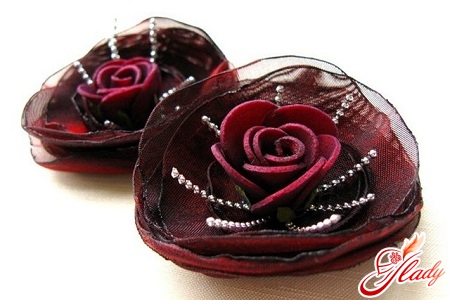
Stiffening
Many people reread the first one in bewildermenthalf of the article looking for the words "gelatin" and "starch". After all, these two substances give the parts the necessary rigidity. That's right. Only we will starch the future flower after the last drop of paint has dried. Every woman knows the proportions for diluting starch. We are sure that you have more than once used grandma's tricks to make a skirt stiffer. With flowers, everything is the same as with clothes. Only here you should take into account that the thinner the fabric, the higher the concentration of starch (or gelatin) will be required. If you are making velvet flowers, then keep in mind that starch should not get on the front side of the fabric. The gelatin mixture is applied only to the back of the velvet cut with a cotton swab.
Basic principles of creating a buttonhole
Before creating a boutonniere for your loved one, learn a few rules for creating them:
Connecting parts
Before you master flower crafts, youprobably armed themselves with a lot of books with colorful pictures. That's right. In such visual aids, each stage of assembly is not only described in detail, but also photographed. But if you have assembled a bouquet and it is radically different from the picture that decorated the handicraft manual, do not be upset. Remember the proverb that says that it is not the gods who burn the pots. And do not under any circumstances abandon attempts to create artificial flowers with your own hands. Didn't work the first time? Try again. We recommend reading:




